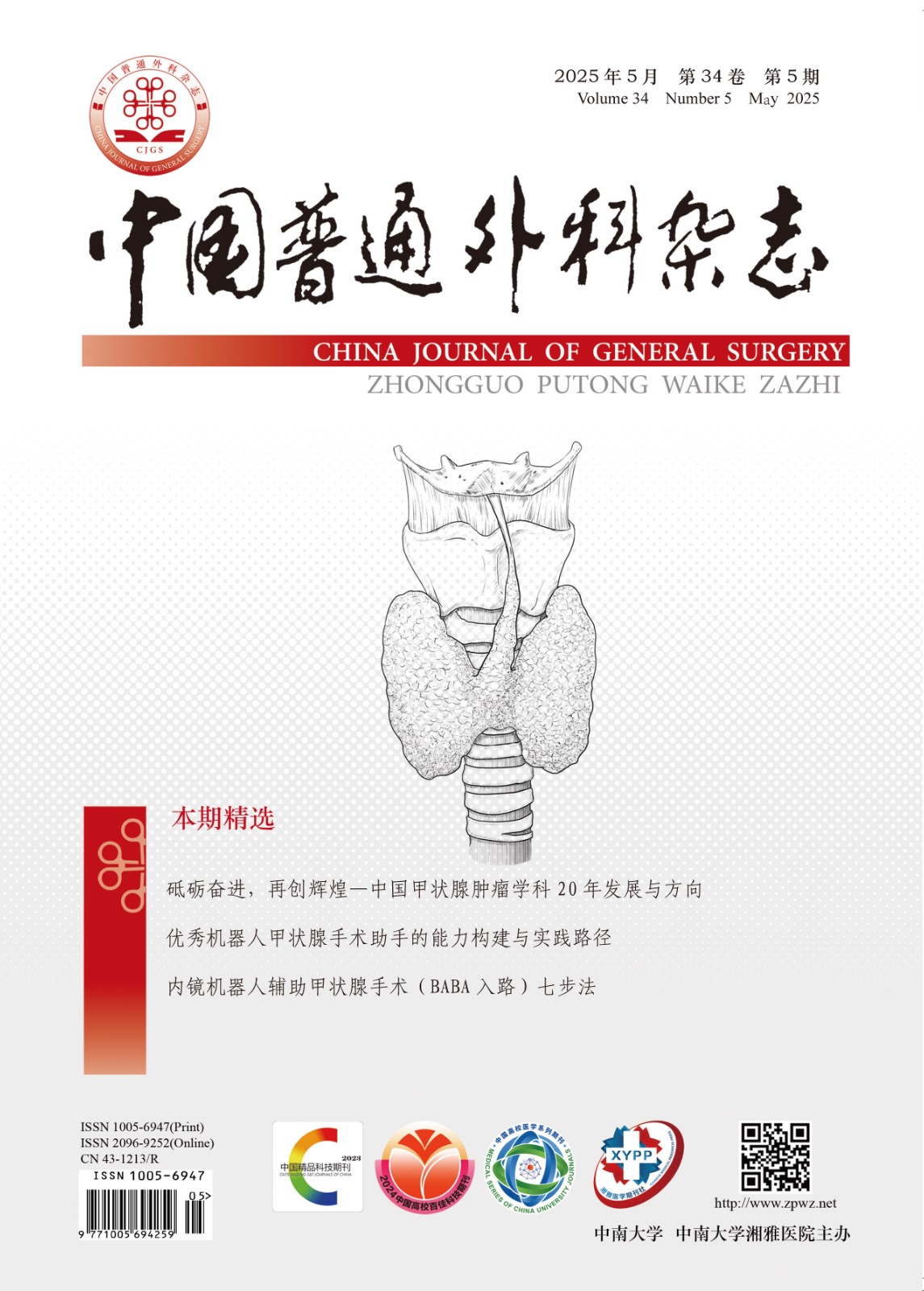Abstract:Objective: To investigate the predictive factors for postoperative pancreatic fistula (POPF) after pancreaticoduodenectomy (PD) and establish its predictive model.
Methods: Eighty-four consecutive patients who underwent PD by laparotomy in the Department of Biliopancreatic Surgery of Xiangya Hospital Central South University from December 2017 to June 2019 were prospectively enrolled. The incidence rates of POPF and other complications were analyzed, and the relevant factors for POPF were screened out by multivariate Logistic regression, by which the predictive model for POPF was established.
Results: In the whole group of 84 patients undergoing PD, the incidence of POPF and overall postoperative complications were 41.7% (35/84) and 57.1% (48/84) respectively. In patients with POPF, the incidence rates of postoperative bile leakage, pulmonary complications and severe postoperative complications were increased, the length of postoperative hospital stay was prolonged and hospital cost was increased significantly compared with those without POPF (all P<0.05). The results of univariate analysis showed that pancreas texture, pancreatic duct diameter, pathology, fistula risk score (FRS), drainage fluid amylase on postoperative day 1 (DFA1), drainage fluid bacterial culture postoperative day 1 (DFBC1) and serum albumin on postoperative day 1 (SA1) were significantly associated with POPF (all P<0.05) . The results of multivariate Logistic regression analysis demonstrated that DFA1 (OR=1.000, 95% CI=1.000–1.000), DFBC1 (OR=18.873, 95% CI=2.913–21.122) and SA1 (OR=0.842, 95% CI=0.721–0.983) were independent predictive factors for POPF (all P<0.05). Of the predictive model for POPF after PD constructed based on the above three factors, and the area under the receiver operating characteristic curve was 0.911 (95% CI=0.850–0.972), and the positive predictive value and negative predictive value were 90.0% and 89.2% respectively. Goodness of fit test showed that there was no statistical difference between the model’s predicted value and actual observed value (χ2=3.773, P>0.05).
Conclusion: DFA1, DFBC1 and SA1 have great importance in predicting the occurrence of POPF after PD. The model established by integrating these three factors has a higher efficiency for predicting POPF, and can be used as the clinical guidance of postoperative management and treatment of post-PD patients.

